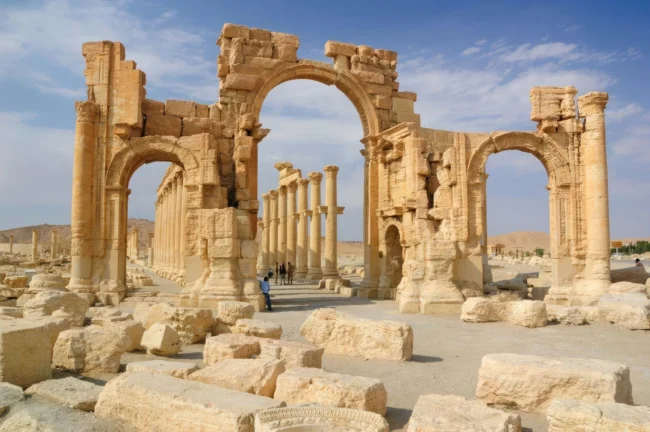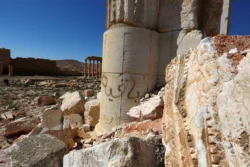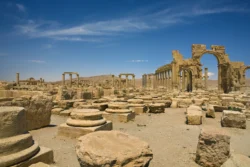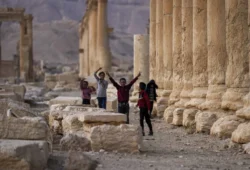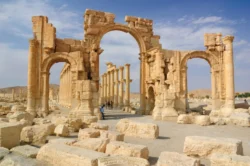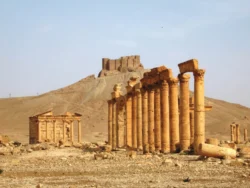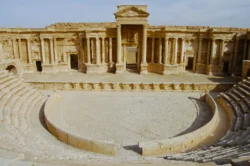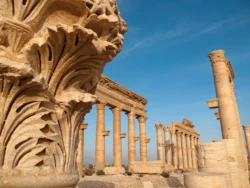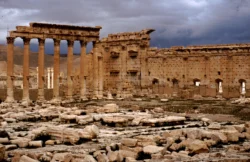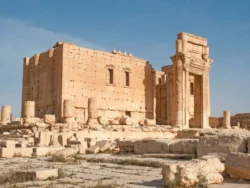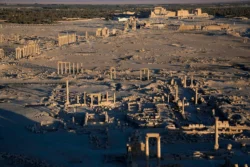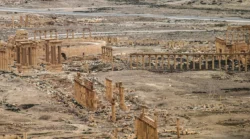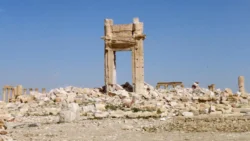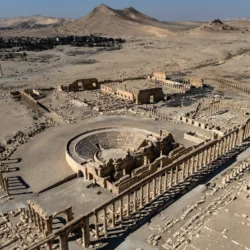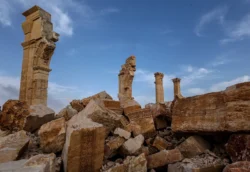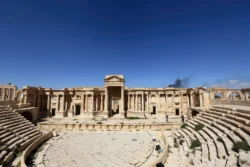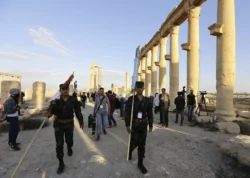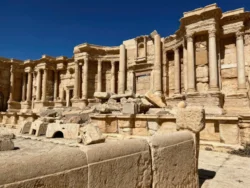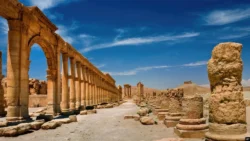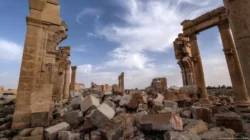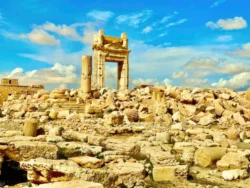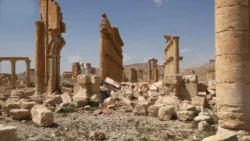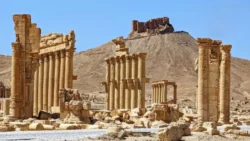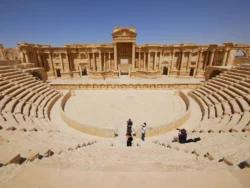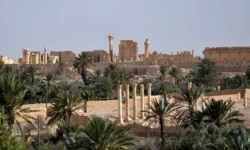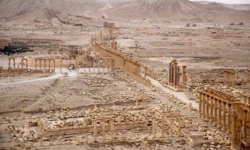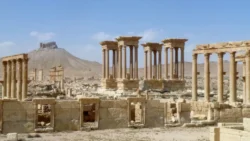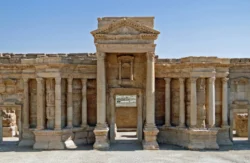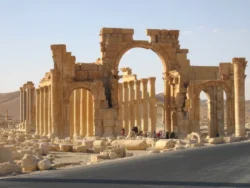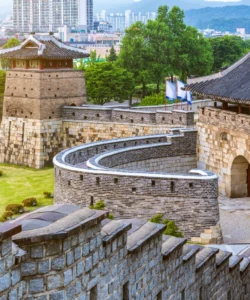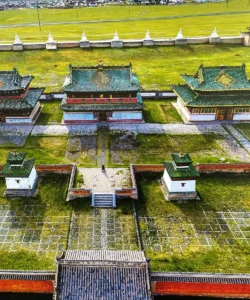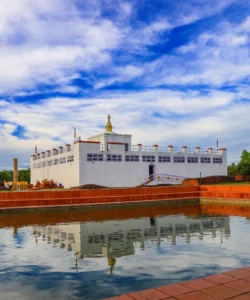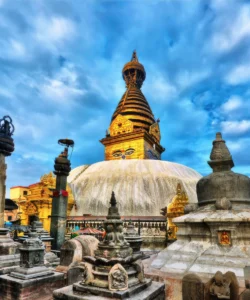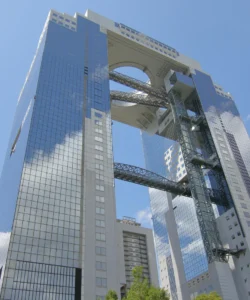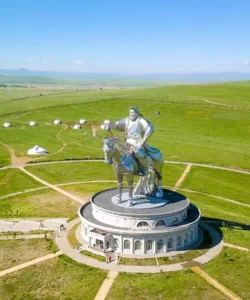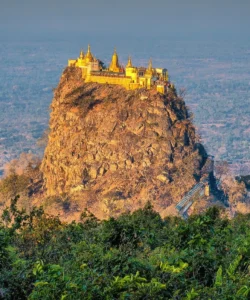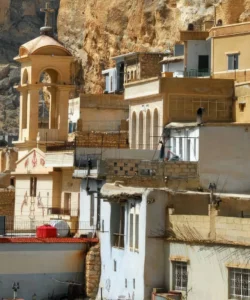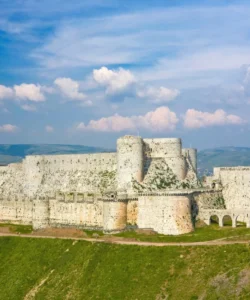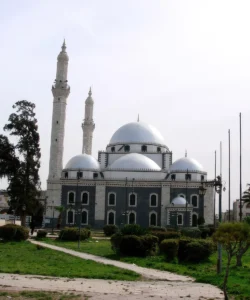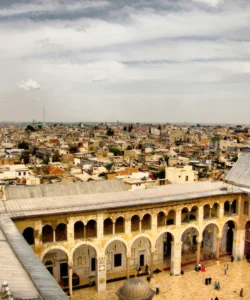The Ancient City of Palmyra, known to its inhabitants as Tadmor, is a monumental archaeological site located in the heart of the Syrian desert. It was a thriving caravan city and a major hub on the Silk Road, famous for its unique blend of Greco-Roman and local Semitic architectural styles. Today, its ruins stand as a powerful testament to a civilization that once challenged the Roman Empire.
Listen to an introduction about Ancient City of Palmyra
Name and Address
Name: Ancient City of Palmyra (Arabic: تدمر, Tadmur), also known as the “Pearl of the Desert.”
Address: The ancient city is an oasis settlement located in the Homs Governorate of Syria, northeast of the capital, Damascus.
How to Get There
A note on travel: Due to the ongoing conflict in Syria, most governments advise against all travel to the country. It is crucial to consult up-to-date travel advisories from your home country before considering any travel to the region.
Assuming safe travel is possible, here is how you would typically get there:
- From Damascus: Palmyra is located approximately 215 kilometers northeast of Damascus. The journey by car or tour bus takes about 3 hours. Special permission is required to visit the site.
- On Foot: The ancient site itself is vast, but you can explore its major monuments on foot. However, be prepared for hot temperatures and consider visiting during the cooler morning or late afternoon hours.
Landscape and Architecture
Palmyra’s landscape is a dramatic sight of monumental ruins rising from the flat desert, showcasing a unique architectural fusion.
- Oasis in the Desert: The city was built around a natural oasis, which was a vital stop for caravans and allowed a wealthy civilization to flourish in a harsh environment.
- Greco-Roman and Eastern Fusion: The architecture is a distinctive blend of classical Greco-Roman techniques and indigenous Eastern traditions. This is evident in structures like the Temple of Bel, which combined a classical Roman peristyle with a distinctly Eastern floor plan.
- The Great Colonnade: This monumental street, lined with towering Corinthian columns, formed the central axis of the city, stretching for over a kilometer and connecting major public buildings.
- Unique Funerary Architecture: Outside the city walls, the necropolis features multi-story tower tombs and underground burial chambers, many decorated with unique funerary portraits that reflect the fusion of cultures.
What Makes It Famous
Palmyra’s fame is rooted in its historical importance as a powerful city-state and its architectural grandeur.
- Queen Zenobia: In the 3rd century CE, Palmyra, led by its ambitious Queen Zenobia, briefly rebelled against the Roman Empire and carved out its own independent kingdom, extending its reach across the Levant and into Egypt.
- “The Pearl of the Desert”: Its strategic location and stunning ruins earned it this nickname, which was used by Romans and travelers alike.
- UNESCO World Heritage Site: The city’s outstanding value as a cultural crossroads and an example of a prosperous Roman-era caravan city led to its designation as a UNESCO site.
- Modern-Day Symbol: In recent years, Palmyra has become a global symbol of cultural heritage under threat, as the civil war and deliberate acts of destruction by extremist groups have caused significant damage to its ancient ruins.
Differences from Some Other Wonders (e.g., Krak des Chevaliers)
While both Palmyra and Krak des Chevaliers are significant historical sites in Syria, they represent entirely different eras and functions.
- Function: Palmyra was a civilian and religious caravan city and a trade hub. Krak des Chevaliers was a military fortress, designed for defense during the Crusades.
- Architectural Style: Palmyra’s architecture is primarily Greco-Roman and Semitic in style, characterized by monumental public buildings and colonnaded streets. Krak des Chevaliers is a masterpiece of medieval military architecture, featuring concentric walls, massive towers, and Gothic elements.
- Time Period: Palmyra’s golden age was during the Roman era (1st to 3rd centuries CE), while Krak des Chevaliers was built centuries later, during the medieval period (12th and 13th centuries).
Ancient City of Palmyra Photos:
